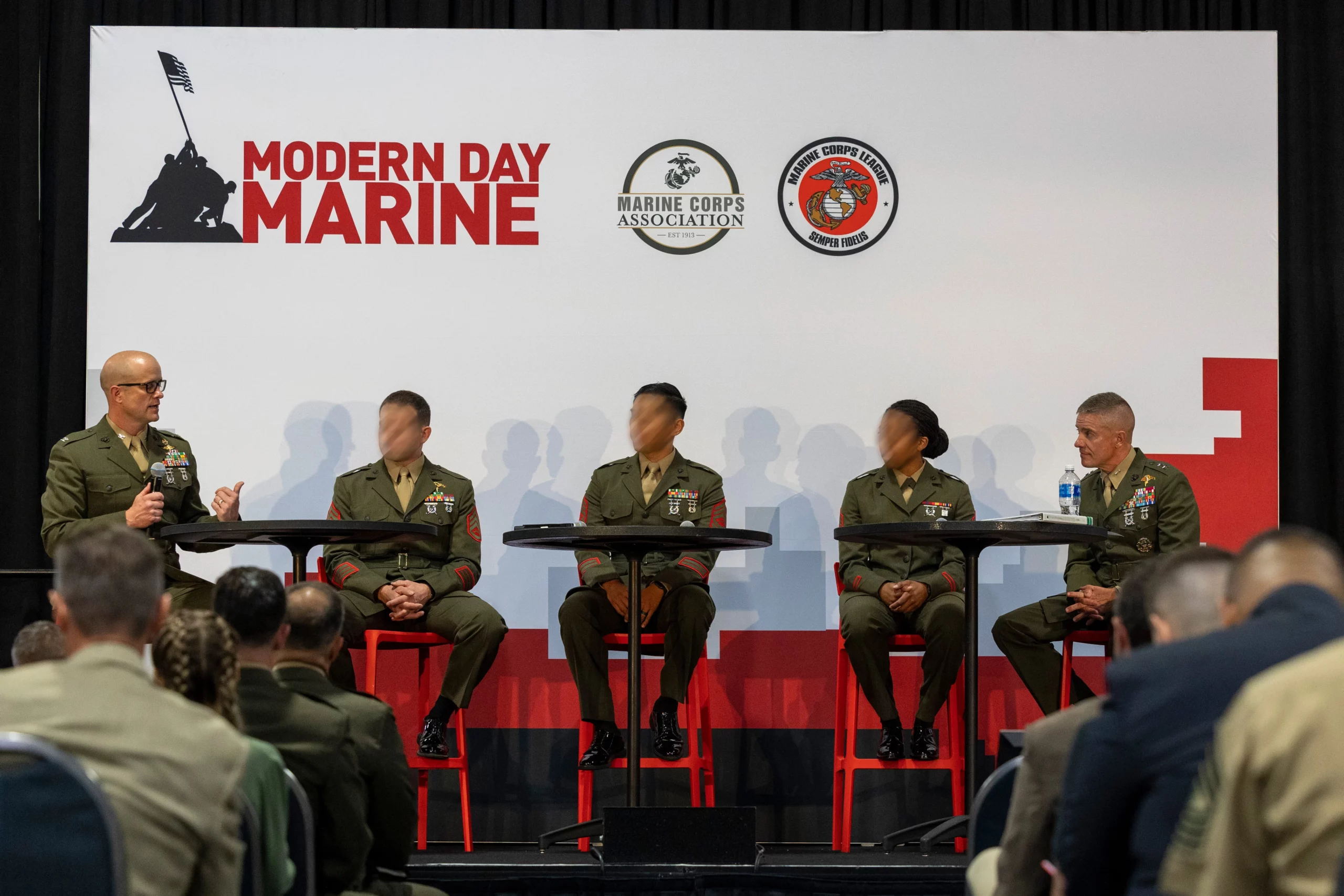The Marine Corps’ special operations forces have already embarked on initiatives aimed at building “Cognitive Raiders” who excel at problem-solving and mental agility and adaptability. Now, the Marines are revealing plans to deploy these elite troops in smaller, capability-dense teams that can be customized for the region and the conditions they’ll face.
At the Modern Day Marine Expo at the end of June, MARSOC Commander Maj. Gen. Matthew Trollinger discussed the “Next-Generation Raider Force,” which aims to give the command the flexibility it needs to accomplish a spectrum of global missions. Nestled within the MARSOC concept of Strategic Shaping and Reconnaissance, or SSR, Next-Gen Raider will take a hard look at MARSOC critical skills operators’ training and technological needs to maximize their effectiveness, even with a small footprint.
Related: Who are the Marine Raiders?

This emphasis is driven by a changing world and the expectation that the U.S. may soon find itself in conflict with a near-peer competitor and operating in an environment as complex and geographically challenging as the Pacific. It’s also informed by MARSOC’s tradition of punching above its weight class: Trollinger said the command executes nearly 9% of U.S. Special Operations Command’s (SOCOM’s) missions with under 5% of SOCOM’s total force strength and less than 2% of its budget.
Related: This 60-year-old plane is moving the Marine Corps’ warfighting strategy into the future

“We’re known for deploying with a [Marine Special Operations Team] or [Marine Special Operations Company],” Trollinger told an audience at the expo. “What we’re looking at is, you know, it doesn’t need to be that standardized. It can look a little different than that and come with some different capabilities, some higher-end capabilities, that are needed and necessary in that environment.”
To that end, he said, MARSOC leaders are taking an in-depth look at how elements are organized and equipped – and they’re listening to the Critical Skill Operators (CSOs) and enablers themselves to ensure they develop the right solutions. (CSOs are special operations warriors and form the core of MARSOC; they are supported by personnel of various other specialties. Both CSOs and support personnel are considered Marine Raiders.)
Speaking alongside Trollinger were three MARSOC personnel including a CSO, a communications specialist, and an intelligence specialist, their identities withheld for operational security reasons, who discussed their own most pressing needs downrange.
Related: 3 pieces of special operations gear that give troops ‘super powers’
The communicator, who’d been in MARSOC for two years, said she’d like to see comms gear that’s more intuitive and easier to set up for
“If it’s more plug and play, and making it as simple as a push of a button so we can move on to the next task, then that’s definitely something we need,” she said.
She said she was impressed, for example, with the apid accessory integration device (RAID) plate on display at Modern Day Marine, a developmental concept that combined a number of modular systems, including radios and robotic controllers, into a single lightweight body-worn plate that promised to lighten an operator’s equipment load by as much as 25 pounds.

The critical skills operator said MARSOC needed rapidly deployable and rugged comms equipment that would better enable team members to track personnel across the battlespace, but also better ways to camouflage their own signatures from hostile forces.
“The ability to hide in the noise is the No. 1 thing I think we need to attack, from my perspective,” he said.

As far as how much smaller deployable MARSOC elements might get, much remains uncertain. Trollinger emphasized that the goal was not to create a new unit of a specific size, but to expand the options MARSOC could offer to a relevant geographic combatant commander. Col. Ian Fletcher, MARSOC’s assistant chief of staff for plans and resourcing, indicated that this effort was part of a maturation process for the command, which at 17 years old, remains SOCOM’s youngest component.
“Naval Special Warfare had to learn this. U.S. Army Special Operations had to learn,” Fletcher said, “how to create more options and opportunities, so you can program deployments; you’re not just being reactive to deployment.”
Feature Image: U.S. Marines with Marine Aviation Weapons and Tactics Squadron One (MAWTS-1) and 2nd Marine Raider Battalion, Marine Raider Regiment prepare to jump out of a KC-130J Hercules during Weapons and Tactics Instructor (WTI) course 2-16 at Site 54, near Wellton, Ariz., April 15, 2016. (U.S. Marine Corps photo by Lance Cpl. Zachary M. Ford, MAWTS-1 COMCAM/ Released)
Read more from Sandboxx News
- These are the 5 best service rifles the US military has ever had
- Combat swimmer operations and their importance in a near-peer conflict
- This is why a SEAL Team 6 member uses the odd Taurus Judge revolver
- Game-changing military aircraft that were canceled before they could change the game
- These are the small arms the Ukraine Foreign Legion uses against Russia




